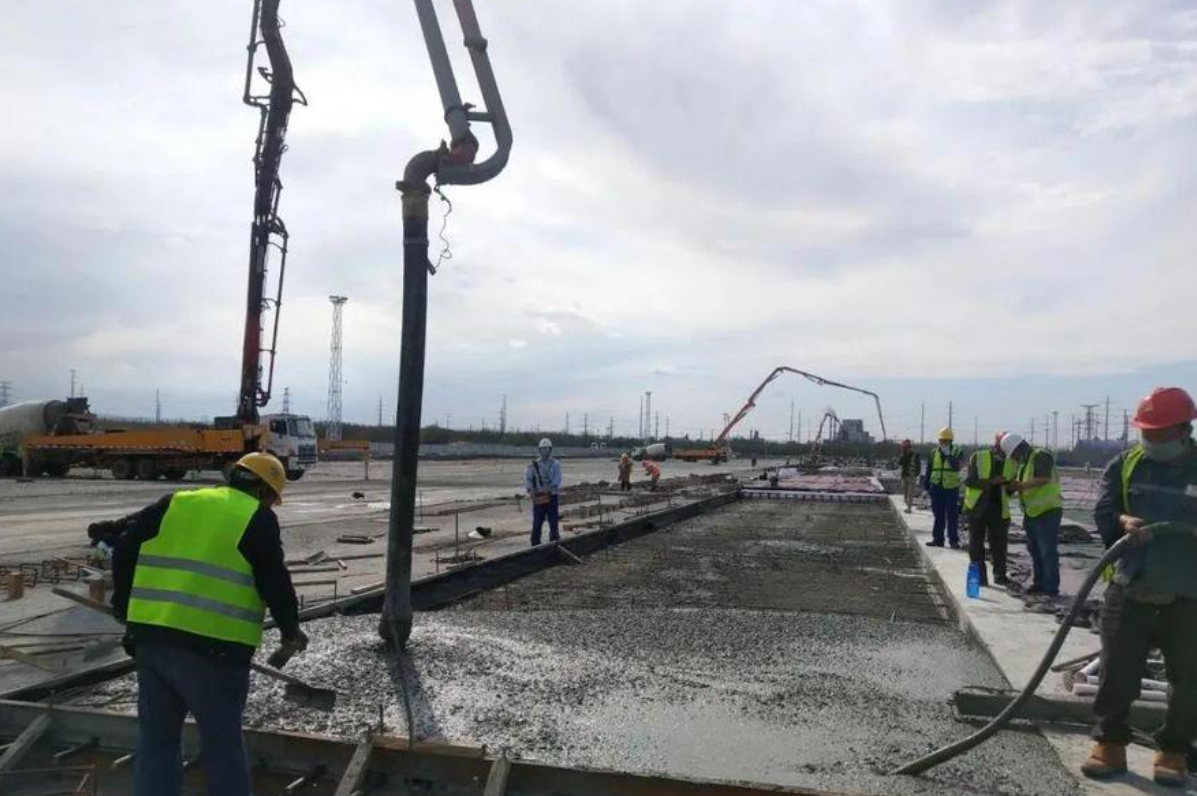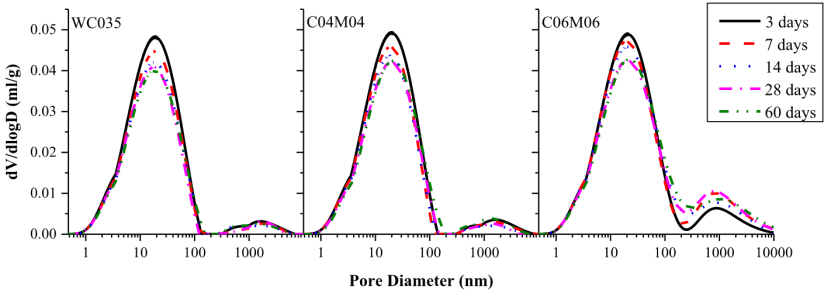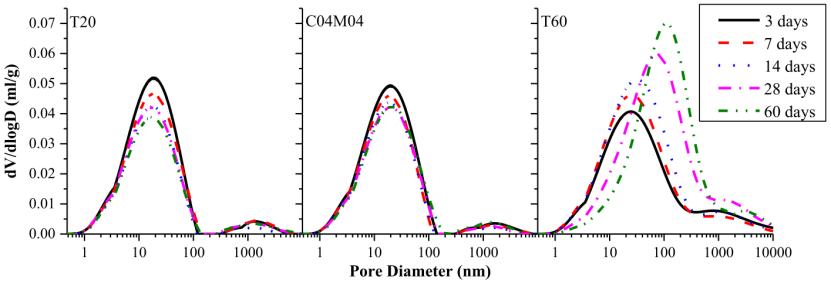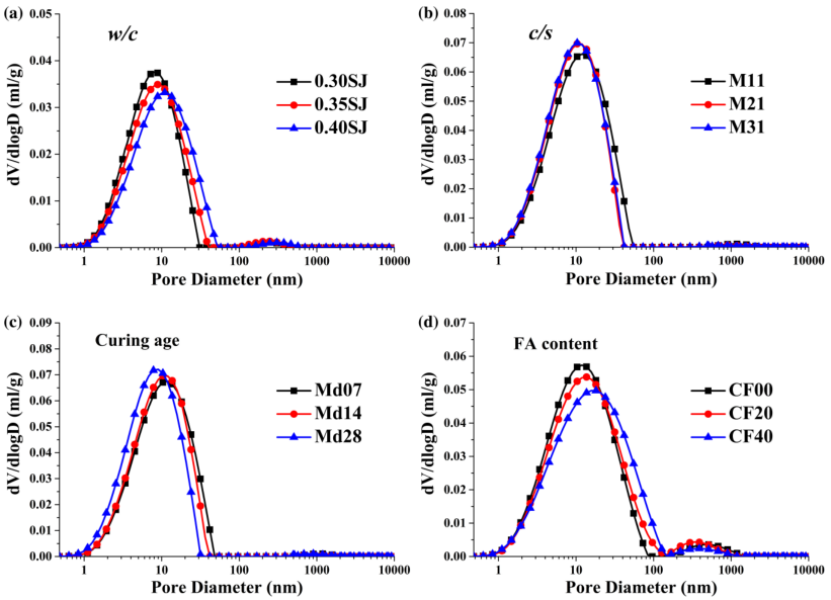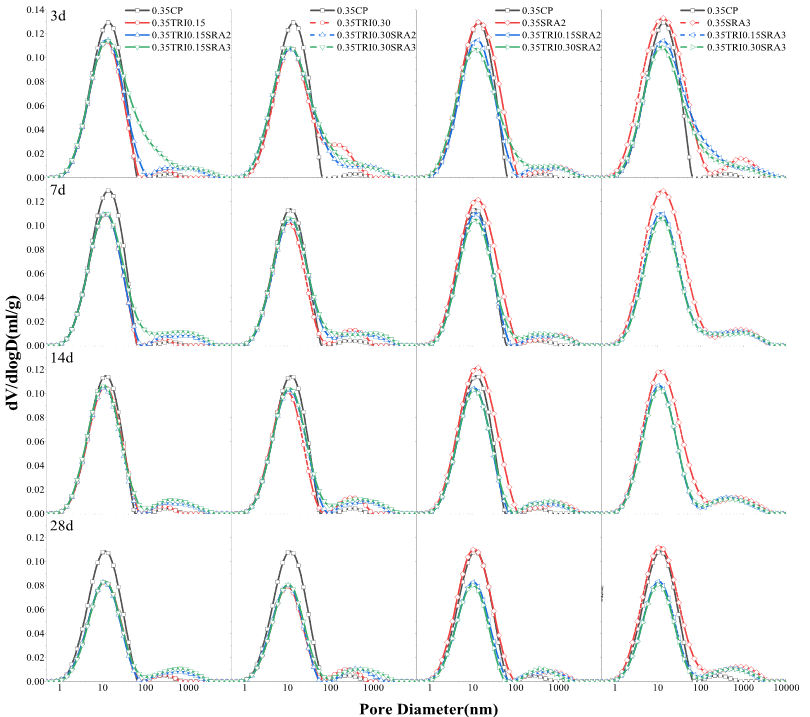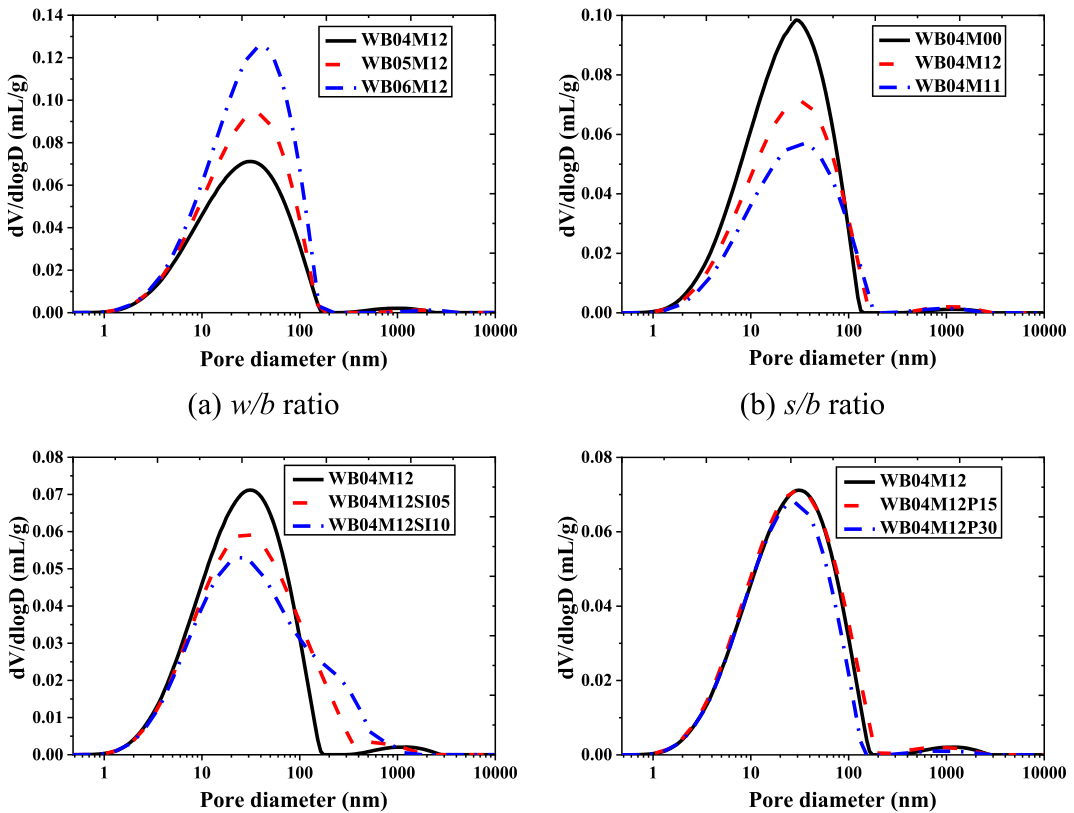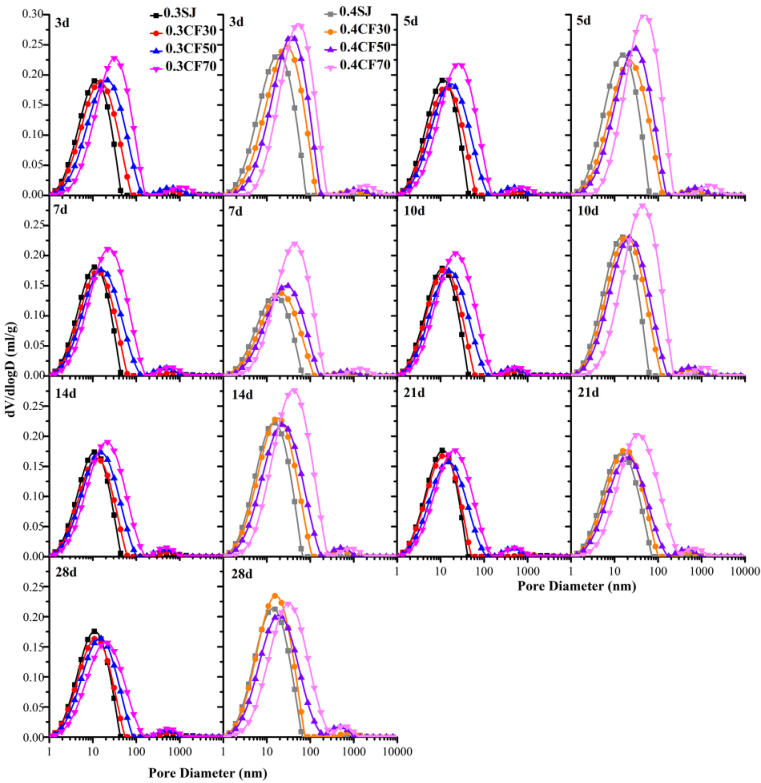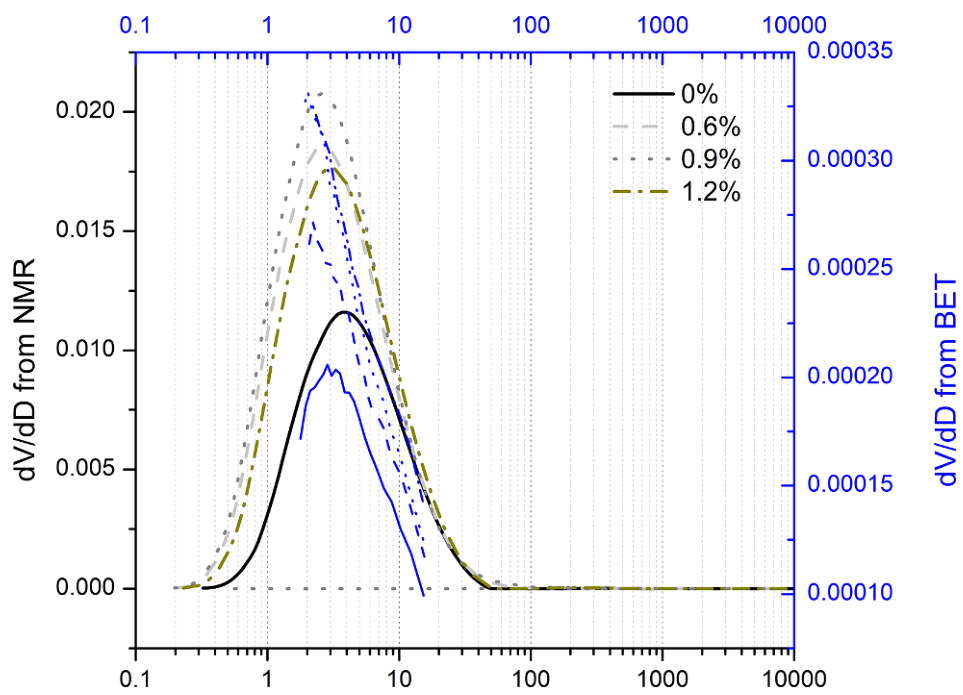Распределение пор по размерам изучения цементных материалов по ЯМР
Материалы на основе цемента обычно используются в строительстве, в том числе цемент, конкретный, раствор, и т. д.. Их структура и производительность пор напрямую влияют на срок службы и обслуживания зданий. Традиционные методы тестирования материала обычно полагаются на физические свойства или химический состав для анализа, Но эти методы имеют некоторые недостатки, например, необходимость подготовки образца, разрушительное испытание, и длительное время тестирования.
В настоящее время, низкопольный ядерный магнитный резонанс (ЯМР) Технология считается одним из наиболее эффективных методов измерения пористых материалов из-за его эффективности и неразрушающего характера. Технология ЯМР низкого уровня может проанализировать содержание воды, пористая структура, и проницаемость материалов без повреждения образцов, разрешение оценки производительности и качества материалов на основе цемента.
Что касается оценки влияния добавок на структуру пор цементных материалов с использованием технологии ЯМР низкого уровня, Вот несколько ключевых моментов из выбранных научных статей:
1. Оценка влияния добавок CEA и MEA на структуру пор:
Высокопрочный и высокопроизводительный бетон подвержен растрескиванию на ранних стадиях из-за значительной тепловой и аутогенной усадки в ограниченных условиях. Добавки на основе CAO (CEA) и mgo (Что-нибудь) широко используются для компенсации этой усадки, Но существует мало исследований по использованию комбинации CAO и MGO для решения проблем структуры пор бетон. В этом исследовании использовалась технология ЯМР низкого уровня для изучения последствий содержания CEA и MEA, температура отверждения, и другие факторы на ранней стадии строительной структуры.
Результаты эксперимента показывают, что комбинированное использование CEA и MEA оказывает значительное влияние на структуру пор раствора на протяжении всего периода тестирования. Добавление CEA уменьшает поры по мере развития, Но добавление как CEA, так и MEA изначально уменьшает поры, с последующим увеличением со временем, который также увеличивается с содержанием CEA и MEA. Учитывая содержание CEA и MEA, температура отверждения, и другие факторы, Была предложена новая модель для анализа структуры пор раствора. По сравнению с традиционными моделями, Прогнозы этой модели показывают хорошее согласие с тестовыми данными и могут предоставить ссылку на смягчение проблем с бетонным усадкой в инженерных приложениях [1].
Фигура 1: Изменение PSD раствора с различным содержанием CEA и MEA с течением времени.
Фигура 2: Изменение PSD раствора при различных температурах отверждения с течением времени.
2. Экспериментальный анализ взаимосвязи между структурой пор и характеристиками поглощения капиллярной воды материалов на основе цемента:
Капиллярная способность поглощения оказывает значительное влияние на долговечность бетона и тесно связана со структурой пор.
в этом исследовании, Структура пор и поглощение капиллярной воды образцов определяли с использованием методов ядерного магнитного резонанса и гравитации низкого уровня., соответственно, Учитывая различные влиятельные факторы.
Результаты эксперимента показывают, что наиболее вероятный размер пор и эквивалентный размер пор материалов на основе цемента увеличивается с увеличением коэффициента воды-цемента (Туалет) и летать пепел (Фанат) содержание, но уменьшение с увеличением времени отверждения и соотношения цемента (с/с). Пористость материалов на основе цемента увеличивается с увеличением W/C и C/S, уменьшается с увеличением времени отверждения, а затем увеличивается с увеличением содержания ФА [2].
Фигура 3: Распределение по размерам диаметра пор в образцах под влиянием различных факторов.
3. Влияние ингибиторов повышения температуры на раннюю структуру цементной суспензии:
В практических строительных проектах, высокопрочный и высокопроизводительный бетон (HSHPC) часто испытывает раннее растрескивание из -за снижения температуры (тепловая усадка) и аутогенная усадка. Чтобы решить эту проблему, Ингибиторы повышения температуры (Три) и усадки, снижающие агенты (Сра) используются для улучшения характеристик HSHPC. в этом исследовании, низкопольный ядерный магнитный резонанс (ЛФ-ЯМР) Технология была использована для проверки воздействия соотношения водного цемента (Туалет) и содержание Три, Сра, и другие добавки на распределение пор по размерам (PSD) и пористость ранней цементной суспензии.
Результаты теста показывают, что PSD образцов обычно включает в себя два пика. Сочетание SRA и TRI оказывает заметное влияние на PSD образцов. Пористость увеличивается с увеличением содержания W/C и SRA, но уменьшается с увеличением содержания TRI. В пределах 28 дни, Образцы с добавлением SRA и TRI демонстрируют значительно более низкую пористость по сравнению с образцами без SRA и/или TRI [3].
Фигура 4: PSD цементной суспензии с различным содержанием TRI и SRA.
4. Оценка долговечности материалов на основе цемента:
Долговечность является одним из ключевых свойств для оценки материалов на основе цемента (CBMS) и значительно влияет миграция воды в CBMS. Проницаемость (С) и коэффициент капилляров (k) являются двумя важными параметрами для оценки поведения CBMS водного миграции, и они тесно связаны с микроструктурой материалов на основе цемента. в этом исследовании, низкопольный ядерный магнитный резонанс (ЛФ-ЯМР) использовался для измерения распределение пор по размерам и пористость раствора. На основе методов LF-ЯМР и гравитации, Значения S и K были перечислены.
Результаты показывают, что эквивалентный радиус пор (ведущий) раствора, определяется распределение пор по размерам, Увеличивается с увеличением количества связующих (w/б) Соотношение и Песчан-связующий (S/B.) соотношение, и уменьшается с уменьшением содержания кремнезема (SF) и супербсорбент полимер (Сор). Значение S улучшается с увеличением отношения W/B и содержания SF, и уменьшается с увеличением отношения S/B. Тенденция k значения раствора аналогична значению S [4].
Фигура 5: PSD раствора в различных факторах влияния.
5. Оценка ранних пор в цементе с добавлением летучей золы:
Большие количества летучей золы обычно используются в качестве частичного замены цемента, чтобы улучшить работоспособность, долговечность, и экономика бетона. Структура пор является важным фактором, влияющим на конкретные характеристики. в этом исследовании, низкопольный ядерный магнитный резонанс (ЛФ-ЯМР) Технология была использована для определения влияния воды до связующего (w/б) Соотношение и содержание летучей золы на структуре пор раннего цемента.
Результаты эксперимента показывают, что размер пор увеличивается с увеличением содержания ясеня и В/В, но уменьшается с прогрессированием времени гидратации. Пористость увеличивается с увеличением отношения W/B и уменьшается с прогрессированием времени гидратации [5].
Фигура 6: PSD летучей золы цементной суспензии с различным содержанием летучей золы.
6. Оценка долговечности материалов на основе коррозии на основе цемента:
Включение бетонных матриц с коррозионными ионами является обычной практикой для повышения долговечности бетона. Ядерный магнитный резонанс низкого поля (ЯМР) Экспериментальные методы были применены для оценки влияния ионов формиата на поверхности пор и структуры. Результаты ЯМР показывают, что поверхностная релаксация цементной суспензии, содержащей гидрофобные агенты, уменьшилась до 60% справочного образца, И есть хорошая консистенция между релаксацией поверхности и поглощением воды. Добавление гидрофобных агентов вызвало изменения в структуре пор, приводя к генерации пластинчатых кристаллов, которые изменили характеристики поверхности пор, тем самым улучшая водостойкость пор в цементной суспензии после смешивания с гидрофобными агентами. Эти результаты показывают механизм, посредством которого формиат кальция влияет на гидрофобность материалов на основе цемента и дает представление о повышении характеристик применения гидрофобных агентов [6].
Фигура 7: PSD материалов на основе цемента с различным содержанием гидрофобных агентов с использованием метода адсорбции и метода ЯМР.
В заключение, применение низкополевого ядерного магнитного резонанса (ЯМР) Технология материалов на основе цемента обеспечивает неразрушающий метод измерения внутренней структуры и физических параметров материалов., выявление изменений в характеристиках и свойствах материала. Он может предложить надежные аналитические данные в различных аспектах., включая контроль содержания влаги, Оценка структуры пор, Анализ реакции гидратации, Оценка проницаемости, и оценка состояния старения. Эта информация имеет большое значение для улучшения качества и производительности материалов на основе цемента и оптимизации инженерных приложений.
Ссылка:
[1]Чжао H., Ли Икс, Чен х, и другие. Эволюция микроструктуры цементного раствора, содержащего MGO-CAO-смешанный экспансивный агент и ингибитор повышения температуры при множественных температурах отверждения.[Дж].Строительные и строительные материалы, 2021, 278(3):122376.[2]Чжао H., Ding J., Хуан и, и другие. Экспериментальный анализ взаимосвязи между структурой пор и характеристиками поглощения капиллярной воды материалов на основе цемента[Дж].Конструктивный бетон, 2019, 20(1).
[3]Чжао H., Сян y, Чжан б, и другие. Влияние ингибитора повышения температуры и уменьшения усадки примесь на структуру пор цементной пасты раннего возраста[Дж].Строительные и строительные материалы, 2021, 306:124896.
[4] А, Хайтао Чжао, и другие. Исследование по сортативности и коэффициенту капиллярности раствора и их взаимосвязи на основе микроструктуры - ScienceDirect[Дж].Строительные и строительные материалы, 265[2023-06-27].
[5]Чжао H., Qin x, Лю Дж, и другие. Характеристика структуры пор в цементных пастах раннего возраста, смешанных с большим объемом летучей золы[Дж]. Строительные и строительные материалы, 2018, 189(20 ноября):934-946.
[6]Чжан Х., Чжао H., Мюш, и другие. Поверхностная релаксация и проницаемость цементных пасты с гидрофобным агентом: Объединение 1H ЯМР и ставки[Дж].Строительные и строительные материалы, 2021, 311:125264.
 заплесневелый
заплесневелый

